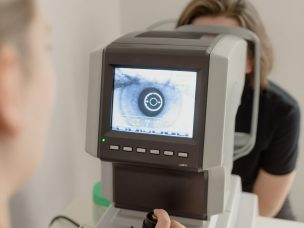In the United States, women are more at risk than men of developing a serious eye disease and vision impairment, and wet age-related macular degeneration (AMD) is no exception. While wet AMD is still prevalent in men, global studies have shown that women have a higher burden of vision loss from wet AMD, implying that gender could be a factor at play.
Additionally, because women have a longer life expectancy, they tend to suffer a higher burden of disease for a longer period of time. This disease burden can have harmful physical and mental effects, often leading to functional disability.
This article, published in Biology of Sex Differences, examined the recommendations for improving women’s eye health from the Society for Women’s Health Research Women’s Eye Health Working Group. The group is composed of researchers, clinicians, and patient advocates. The key points of their recommendations included expanding the research framework, improving access through telehealth, increasing provider and patient education, and growing interdisciplinary collaborations.
The first point, expanding the research framework, recognizes the need to prioritize gender-specific research that could specifically target why gender disparities occur in eye diseases such as wet AMD. This point also acknowledges the potential impact of social and environmental factors and advocates that women and other gender minorities must be included more in ophthalmological research.
The second point, improving access through telehealth, considers how telehealth could provide care to more patients at a lower cost. In addition, because research has shown that women are more likely to use telehealth than men, telehealth could serve as a potential avenue to equitable ophthalmological care for women.
The third point, provider and patient education, advises that health specialists should be aware of gender disparity in eye diseases like wet AMD. Additionally, female patients should be informed of their increased risk and provided resources to improve their treatment adherence.
The fourth and final point, growing interdisciplinary collaborations between healthcare workers, public health experts, and community stakeholders, supports partnerships that could help minimize the gender disparity in eye diseases by connecting research to funding and improving patient education.
The authors concluded that these initiatives as a whole could help better address the global eye disease burden in women [1].
Source:
[1]










